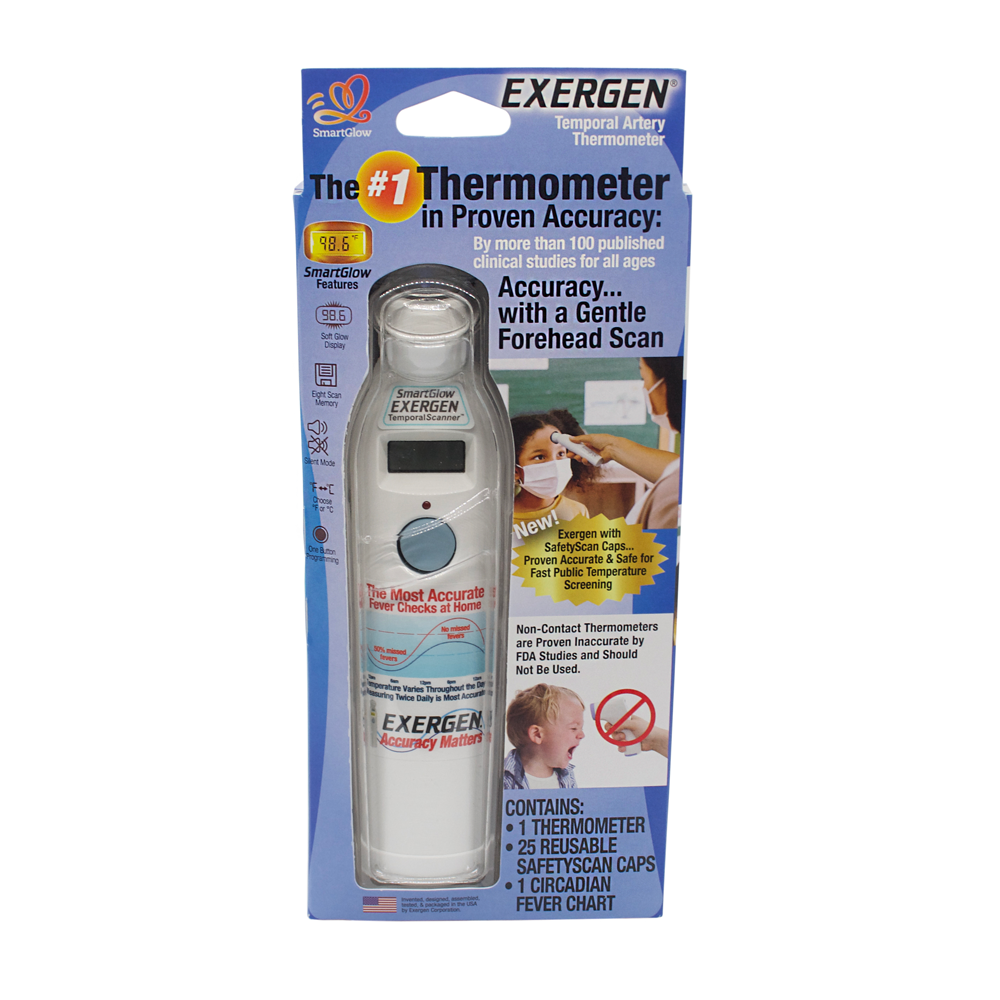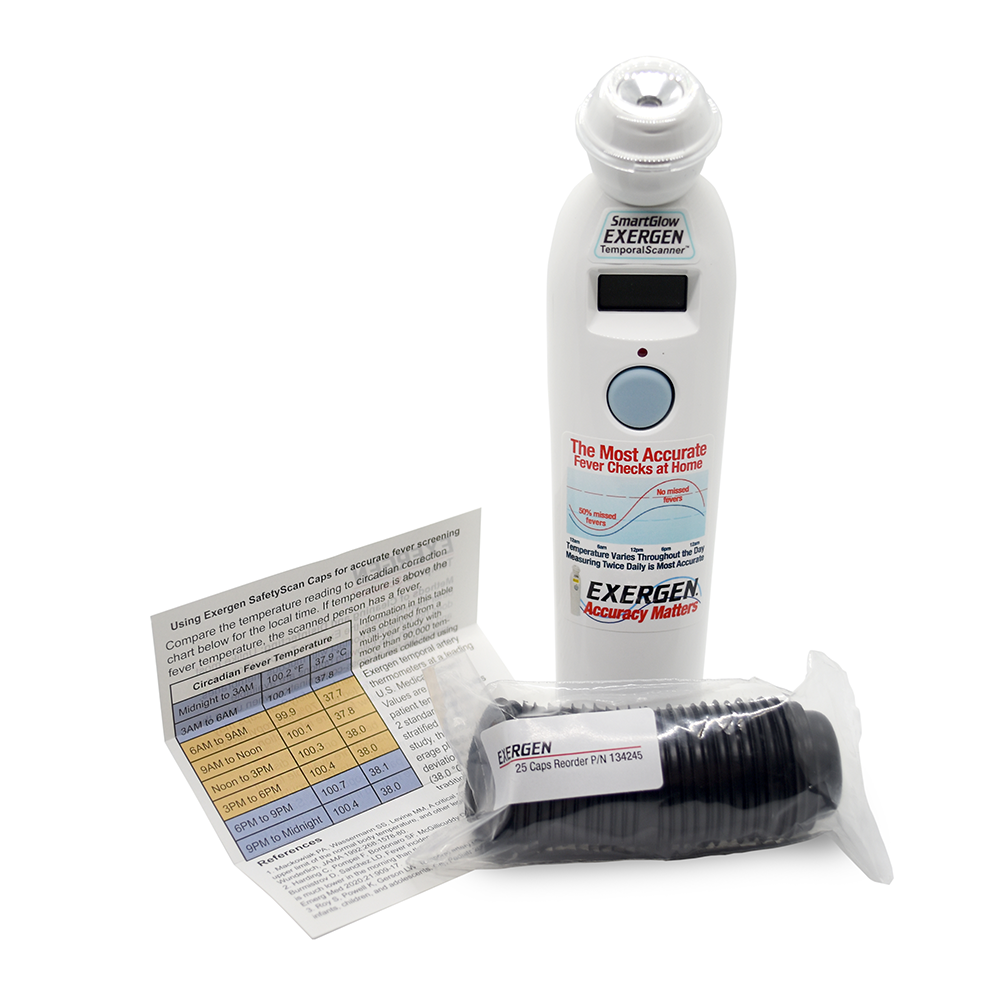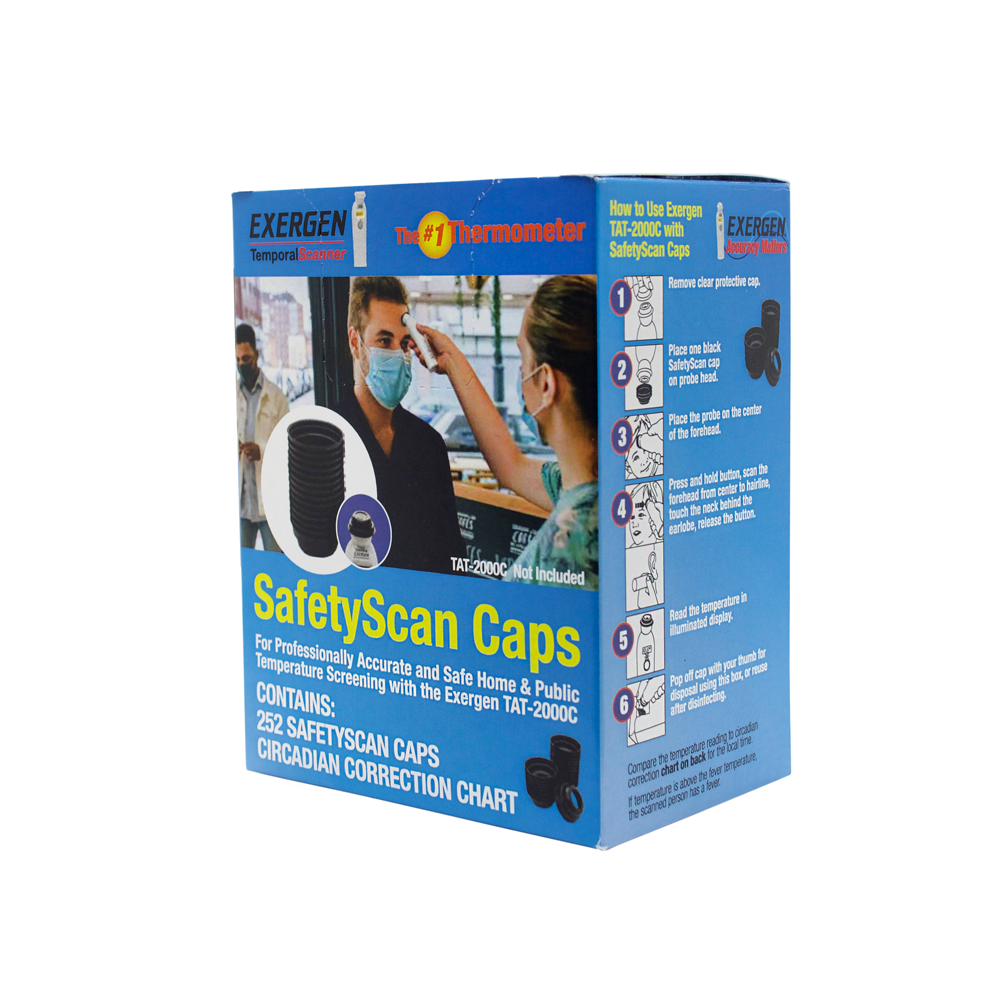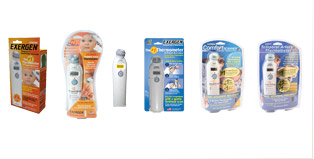SafetyScan Caps for Accurate Fever Screening
For Professionally Accurate and Safe Home & Public Temperature Screening with the Exergen TAT-2000C.



Exergen SafetyScan Caps
Use Exergen SafetyScan Caps with the TAT-2000C Temporal Artery Thermometer for safe, hygienic, and professionally accurate temperature readings at home or in public settings. The disposable or reusable caps provide cross-contamination protection between users.
Disposable or Reusable Thermometer Caps
Exergen SafetyScan Caps can be used once and discarded for single-patient use, or cleaned and reused on the same patient using 70% isopropyl alcohol. This allows for customized levels of contamination prevention for different environments and patient populations.
Do not reuse SafetyScan Caps if they are cracked, chipped or visibly damaged.
How to Disinfect Reusable SafetyScan Caps
For multi-use caps, follow these simple cleaning steps:
- Remove cap from thermometer probe
- Wipe down fully with 70% isopropyl alcohol
- Allow to fully air dry before reuse
Accurate Fever Screening with SafetyScan
To check for fever accurately using SafetyScan Caps:
- Take temperature reading with the probe and cap
- Compare reading to the circadian temperature fever chart below for local time
- If reading is higher than the chart's fever temperature, the subject likely has a fever
Information in this chart was obtained from a multi-year study with more than 90,000 temperatures collected using Exergen temporal artery thermometers at a leading U.S. medical center.2 Values are average patient temperature plus 2 standard deviations, stratified by time. In the study, the across-day average plus 2 standard deviations was 100.4°F (38.0°C), matching the traditional fever definition.
References
- Mackowiak PA, Wasserman SS, Levine MM. A critical appraisal of 98.6 degrees F, the upper limit of the normal body temperature, and other legacies of Carl Reinhold August Wunderlich. JAMA 1992;268:1578–80.
- Harding C, Pompei F, Bordonaro SF, McGillicuddy DC, Burmistrov D, Sanchez LD. Fever incidence is much lower in the morning than the evening: Boston and US national triage data. West J Emerg Med 2020;21:909–17.
- Roy S, Powell K, Gerson LW. Temporal artery temperature measurements in healthy infants, children, and adolescents. Clin Pediatr 2003;42:433-7.



